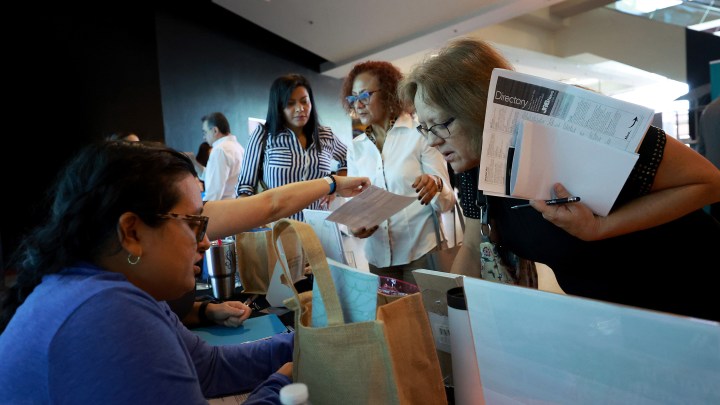
More people looked for jobs in August, easing labor market pressures
More people looked for jobs in August, easing labor market pressures

The national labor force participation rate went up in August, and that’s exactly what the Federal Reserve wants to see. More people looking for jobs eases some of the inflationary pressure on wages without putting a dent in growth.
The participation rate rose a healthy three-tenths of a percentage point last month. But the share of the population in the job market was still 1 percentage point below the level of February 2020.
During the height of the pandemic, labor force participation fell across the board. But it really cratered for women, many of whom were forced to take on extra caregiving duties at home.
Friday’s jobs report shows a significant recovery there, said Jasmine Tucker with the National Women’s Law Center.
“Women are still not quite back where they were in February 2020, but we’re getting there.”
There were still 427,000 fewer women in the labor force than before the pandemic, Tucker said. But among women of prime working age — 25 to 54 — participation recovered in August.
Despite continuing challenges related to child care, labor force participation for this group actually surpassed February 2020’s rate and is nearing an all-time high, according to Julia Pollak, chief economist for job site ZipRecruiter.
“It probably has quite a lot to do with remote work,” she said. “We know that women value remote work opportunities far more highly and that this pandemic has accelerated the trend towards remote work by 50 years.”
Participation by men in that “prime” age group last month still lagged its pre-pandemic baseline. But the biggest shift in the labor force participation rate comes down to Americans 55 and older.
“We’ve seen a lot of, sort of, accelerated retirements — people in their late 60s and 70s who left the labor force,” said Aaron Sojourner, an economist at the W.E. Upjohn Institute for Employment Research.
Older workers have greater health concerns when it comes to in-person work, and are more likely to have accumulated wealth from stock market and real estate gains, Sojourner said.
As pandemic conditions have improved and wages have increased, some older people have returned to the labor market, said Daniel Zhao, lead economist at Glassdoor.
“We have seen ‘unretirement’ rates pick up over the course of the last few months and more workers returning to the workforce from retirement,” he said.
But that’s not enough to counter the massive demographic shift underway as the baby boom generation naturally ages out of the workforce. One effect is that a growing share of the population as a whole is made up of people who are retirement age.
“I think that we’re not going to get all the folks back at the older ages,” Sojourner said.
There’s a lot happening in the world. Through it all, Marketplace is here for you.
You rely on Marketplace to break down the world’s events and tell you how it affects you in a fact-based, approachable way. We rely on your financial support to keep making that possible.
Your donation today powers the independent journalism that you rely on. For just $5/month, you can help sustain Marketplace so we can keep reporting on the things that matter to you.

















